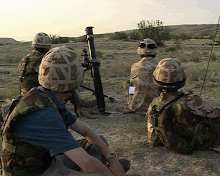This is part two in a series of catch up posts about a selection of the papers at the Cardiff Journalism conference. Part one was
here last time I looked. In this instalment we have two different views of Twitter - ambient journalism and promotional tool. But first a look at 'virtual' journalism.
Journalism in Second Life(Bonnie Brennen and Erika dela Cerna)Just in case you haven't come across it yet, Second Life users come from all over the world to construct virtual representations of themselves known as avatars. They also create the virtual environment they participate in. Brennen told us it's a
Massive Multiplayer Online Role-Playing Game (MMORPG).
The resarch looked at three newspapers in Second Life.
1.
Metaverse Messenger, "A real newspaper for a virtual world". Metaverse is formatted as a traditional tabloid and uses journalistic standards.
2.
The Alphaville Herald, "Always fairly unbalanced". Brennen said the sarcastic and acerbic tone of the paper meant it 'read more like blog entries' than journalism. (Slightly dangerous comparative line to go down if you ask hard questions about what a blog is but we know what she means!)
3.
The Second Life Newspaper - "The Easy way to understand the Grid". Reports on happenings in Second Life in a blog format. Part of its content is user-submitted.
Brennen and dela Ceran draw on postmodernism to frame their analysis; in particular the work of
Baudrillard and the concept of hyperrealism where virtual reality becomes as real as actual experience. Second Life's media blur distinctions between truth and artifice although there is critical reflection on this phenomenon within the virtual world. A column in the Metaverse Messenger called 'The Line' interrogates the line between the virtual and the real.
Second Life Newspapers pursue interactive strategies. In May 2009 Alphaville Herald celebrated its 50,000th reader comment suggesting that journalism in Second Life is flourishing.
There's more on this paper by Axel Bruns here. Twittering the News: the emergence of ambient journalism(
Alfred Hermida)
UptakeHermida noted the rapid adoption of Twitter by journalists provoking something of a media frenzy.
- UK National newspapers (Sept 09) had 131 official accounts with 1.47 million followers.
- Sky News have a Twitter Correspondent.
- Muckrack aggregates tweets from journalists.
This led to a) bewilderment on the part of some journalists and b) concerns about verification: how do you judge the veracity of online comments and navigate inaccuracies, rumours and misinformation?
Ambient journalism: Twitter as awareness systemHermida described Twitter as a multi-faceted, fragmented news experience. But he drew on computer-mediated communication research to argue that Twitter acts as an 'awareness system' in which the fragmented tweets could be seen together as part of a system rather than in isolation. This makes it possible to construct and maintain an awareness of other people's activities as individual tweets do not require the same cognitive attention as other forms of media.
(Just wondering to myself where Twitter would fit on McCluhan's continuum of 'hot' and 'cold' media...
This person has already had a go. I've just had a go but need to spend more time thinking about it...)
Verification(Where was I now? Ah yes...) Hermida highlighted the difficulties journalists face in identifying, and verifying valuable information. He described the extraordinary immediacy and velocity of tweets during the Iran Election. No individual journalist could go through them all and the event emphasised the importance of selecting and filtering. He suggested that journalists should be developing systems to help them filter the information on Twitter.
Hermida also saw potential in Twitter's ability to make visible the communities that share news through the trend of retweeting and the 'following' feature.
The Future of Twitter?Social media services are vulnerable but suggested the concept of real-time, searching, linking, and follower structure would be here to stay. Challenged journalists to design the tools that can analyse and interpret Twitter as an awareness system.
Twittering the News: how U.S. traditional media adopt microblogging for their news dissemination(Marcus Messner, Asriel Eford)
- Analysis of 180 newspapers and TV stations with Twitter accounts in the United States.
- Observed Twitter feeds in action on April 4 and 5 2009.
- Analysed tweets: number of tweets; news value of the tweets; hyperlinks.
Percentage of news outlets with Twitter accounts- 90.9% of newspapers, and 91% TV stations
Followers- Average of about 7,000 followers.
- But only 2% had more than 10,000 followers.
Twitter Use- On the days of analysis 65.6% of the news outlets tweeted. There were 1568 tweets. 94.3% of tweets were news related; 5.7% were personal. 93% of tweets contained hyperlinks. Newspapers tweeted about twice as much as TV stations.
Messner concluded that traditional media use Twitter as a promotional tool through extensive internal linking. He suggested that more attention needs to be paid to community formation and the active recruitment of followers. Tweets need to go beyond shovelware and Twitter should be approached as an online social network, not merely another publication platform.
(But it's important to note that this study only looked at what you might describe as official news accounts, not the Twitter accounts of individual journalists. I would hypothesise that they use Twitter in a completely different fashion. And if they don't why on earth not!?)
More on this paper here by Alfred Hermida and by Sarah Hartley in The Guardian.
![Reblog this post [with Zemanta]](http://img.zemanta.com/reblog_e.png?x-id=72f56b7e-bcce-4fa4-930d-2516278f2a34)
